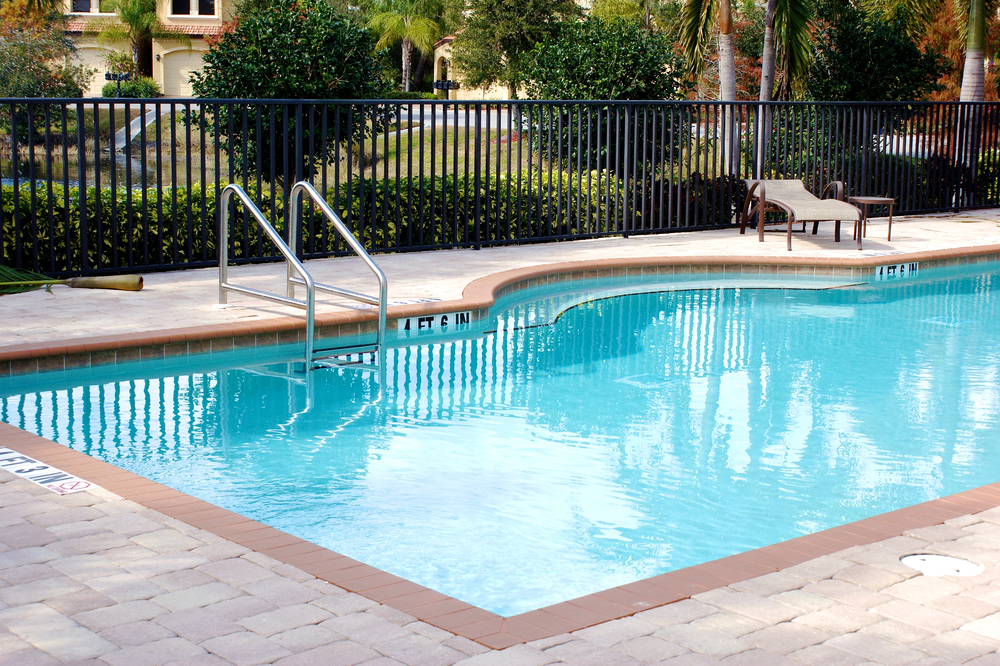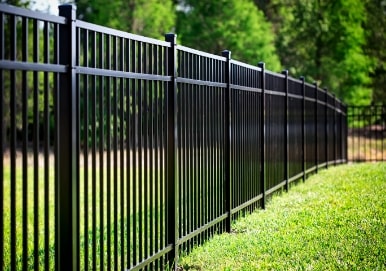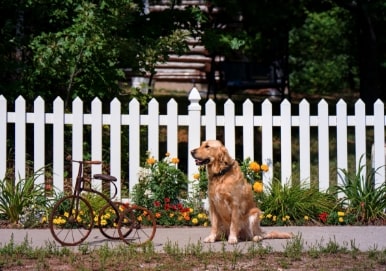A residential pool fence is a necessary addition to any backyard pool. Its primary purpose is to prevent accidents, particularly drowning, by keeping young children and pets away from the water.
The installation of a pool fence, however, is not just about creating a barrier. It involves choosing the right materials, design, and installation method that align with safety standards while also enhancing the overall look of your property.

In this article, we will cover the key dos and don’ts of installing a residential pool fence to guide you through the process.
Why You Need a Pool Fence
Pool fencing serves multiple purposes beyond just keeping children and pets safe. It can enhance the privacy of your swimming area, add to your property’s aesthetic, and increase its value.
In fact, many local building codes require pool fences, especially in residential areas where there are young children or where there is high foot traffic around the property.
A residential pool fence also reduces liability in case of accidents, which is something every homeowner should consider.
The Do’s of Installing a Residential Pool Fence
The process of installing a residential pool fence may seem straightforward, but there are several best practices to follow to ensure it is both effective and compliant with local laws. Here are the key dos to consider when installing a pool fence in your backyard.
- Do Choose a Fence that Meets Standards and Codes
The first step in pool fence installation is ensuring that the fence complies with all local building codes and regulations. Different regions have different rules for pool fences, so it is important to check with your local authorities before installation.
The standard height for a residential pool fence is at least 4 feet, and many codes will also specify requirements for gate latches, materials, and other design features. Adhering to these standards is not just important for safety, but it also ensures that you avoid fines or issues with property resale.
- Do Use Self-Closing and Self-Latching Gates
The gate is one of the most vulnerable points of a pool fence. It is essential that the gate closes and latches automatically to keep the pool area secure when not in use. Self-closing and self-latching gates are important features that reduce the risk of the gate being left open. The gate should swing away from the pool area, and the latch should be placed at a height that is out of reach of young children.
- Do Keep the Fence Clear of Climbing Aids
To maintain the effectiveness of your pool fence, keep the area around it clear of objects such as chairs, toys, and ladders. Children may use these items to climb over the fence, rendering it less effective. Ensure that there is enough clearance around the fence to prevent such objects from being used to scale the barrier.
- Do Consider the Material and Aesthetic Appeal
The material you choose for your pool fence will affect both its durability and appearance. Wooden, vinyl, and aluminum are common choices for residential pool fences. Each material has its own advantages, such as vinyl being low-maintenance and aluminum providing strength and modern appeal.
Choose a material that suits your property’s aesthetic and your personal preferences. A fence that is both functional and visually appealing can enhance the overall look of your yard.
If you are considering wood, take a look at our wood fence design and installation. For options in vinyl and aluminum, you may find our vinyl fence design and installation, and aluminum fence design and installation services helpful.
- Do Maintain the Fence Regularly
A residential pool fence should be checked regularly to ensure that it remains in good condition. Over time, wear and tear from weather conditions, the sun, and regular use can cause the fence to weaken or degrade. Check for any loose posts, damaged rails, or worn-out locks. Ensure the gate continues to self-close and latch properly. Keeping your fence well-maintained will extend its life and effectiveness.
- Do Install the Fence Professionally
Although installing a pool fence might seem like a DIY project, it is best to hire a professional fence installer. Pool fences require precise measurements and installation techniques to meet safety standards. A professional installer will also ensure that the fence is placed in compliance with local laws and regulations. Professional installation can save you time and headaches, guaranteeing that your fence functions as intended.
- Do Educate Children About Pool Safety
A pool fence is only one layer of safety protection. Educating children about pool safety is an integral part of preventing accidents. Teach them the importance of the fence and the dangers of going near the pool area without supervision. Children should understand that the pool fence is not a toy, and they should never attempt to climb it or enter the pool area without an adult present.
The Don’ts of Installing a Residential Pool Fence
Along with best practices, there are several mistakes to avoid when installing a residential pool fence. Here are the most common don’ts you should be aware of.
- Don’t Leave Gaps in the Fence
Leaving gaps in your pool fence can create safety risks, as children and pets could crawl through the openings. It is crucial to ensure that the fence is installed tightly with no gaps, cracks, or spaces between the posts and rails. This is particularly important if you choose a material like wood, which can shrink or warp over time.
- Don’t Forget to Put Away Toys or Furniture
Simply having a pool fence around your swimming pool does not guarantee complete safety. If you leave toys, furniture, or other objects near the fence, children may use them as tools to climb over the fence. Always clear the area around the pool fence, especially when it is not in use.
- Don’t Use a Fence That is Too Short
A fence that is too short is not only ineffective, but it can also compromise the safety of your pool area. The recommended minimum height for a pool fence is 4 feet, but a taller fence may be necessary if you have older children or larger pets. A taller fence makes it more difficult for children to climb over and provides better protection.
- Don’t Use Horizontal Rails or Bars
Horizontal rails or bars may look appealing, but they pose a risk to the safety of your pool area. Children can use horizontal bars as footholds to climb over the fence, and pets can use them to jump over as well. Instead, opt for a fence design that uses vertical bars or mesh. This design will make it harder to climb over and will provide better security.
- Don’t Use Low-Quality Locks
A low-quality lock on the pool gate can be easily bypassed or tampered with, putting your family and pets at risk. Invest in a high-quality lock that is tamper-resistant and durable. The lock should also be positioned at a height that is out of reach of young children to prevent unauthorized access.
- Don’t Rely Solely on Pool Covers
While pool covers are helpful, they should never be used as a substitute for a pool fence. Pool covers can be easily removed, and they do not provide a physical barrier between children or pets and the water. A pool fence should always be used in combination with a cover for maximum safety.
- Don’t Install a Fence Too Close to the Pool
The pool fence should be positioned at least 4 feet away from the edge of the pool. This distance allows for better access for maintenance and reduces the risk of someone falling into the pool while attempting to climb the fence.
Let Good Neighbor Fence Help You with Your Pool Fence Installation
At Good Neighbor Fence, we understand the importance of keeping your pool area safe. Our team specializes in installing residential pool fences that meet local regulations and exceed safety standards. We work with a variety of materials to ensure your pool fence is both secure and attractive.
If you are ready to install a pool fence that provides peace of mind, contact Good Neighbor Fence today.





